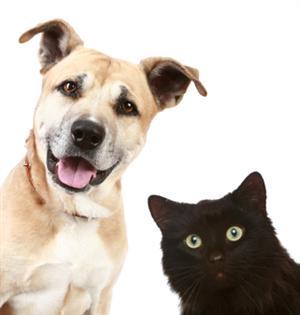| Complexity level: | 6 |
| Project cost ($): | 10 |
| Time required: | 1 hour to prepare, 1 day for the science project experiment |
| Material availability: | You will need the cooperation of a zoo, or pet store, as this experiment requires the participation of a primate (monkey). |
| Safety concerns: | Ensure that all animals are handled by trained animal handlers to prevent injury. |
Hypothesis
The monkey, cat, dog and mouse are attracted to shiny objects such as Christmas ornaments.
Overview
Curiosity
Curiosity is behavioral trait that causes people or animals to be inquisitive. It causes us to explore, investigate and learn new things. Curiosity is the motivating force for us to experiment, experience and learn new things. It fuels our drive to make new discoveries in science and to explore new frontiers.
We are always curious about the new and novel events that occur around us. All of us, young and old, possess curiosity, to some degree. Curiosity has also been observed in many of the more intelligent animal species, such as the ape, monkey, cat, dog and even in fish, birds, insects amongst many others.
Curiosity is an important way for us to learn new things. It helps us, especially the young ones, learn about danger and how to avoid it. An example is when a child, curious about fire, tries to touch the flame on a candle and gets his fingers burnt! Of course, too much curiosity can be dangerous. An ignorant animal exploring a trap out of curiosity can end in captivity or even dead. As the saying goes, “Curiosity killed the cat!”
Scientific Terms
Materials
The materials required for this science fair project:
- a monkey (you will need check with a local zoo or pet store)
- a dog
- a cat
- a mice
- a plastic mirror
- a stuffed doll
- shiny Christmas ornaments
- a red rubber ball
- a blue rubber ball
- a stopwatch
Procedure
1. For this science fair project, the independent variable is the type (species) of animal. The dependent variable is the object that attracted the curiosity of the animals. This is determined by observing of the animals pick up, play with, or inspect the objects. The constants (control variables) are the time given for the animals to be with the objects, the environment in which the experiment is conducted and the number of objects used.
2. The four animals selected to take part in this science project experiment, are a monkey, a dog, a cat and a mouse. The objects used to test the animal’s curiosity are a plastic mirror, a stuffed doll, shiny Christmas ornaments, a red rubber ball and a blue rubber ball.
3. The objects are placed in front of the first animal, the monkey, for 15 minutes. The time is monitored using a stopwatch. The animal is allowed to touch, pick up or play with the objects. If the animal spends more that 30 seconds looking, holding or playing with any of the objects, then it is recorded as having been interested in that object. After15 minutes, the observations are recorded in the table given below.
4. The tests are repeated using the dog, cat and mouse. The observed results are recorded in the table given below.
Results
It was observed that the animals were attracted to different types of objects. For example, the monkey didn’t care for the stuffed doll nor the balls. The dog only took to the shiny ornaments and the balls. However, it was observed that all of the animal subjects were attracted to the shiny Christmas decorations!
| Animal | Objects that attract animals attention and curiosity | ||||
| Plastic mirror | Stuffed doll | Shiny ornaments | Red ball | Blue ball | |
| Monkey | √ | X | √ | X | X |
| Dog | X | X | √ | √ | √ |
| Cat | X | X | √ | √ | √ |
| Mice | X | √ | √ | X | X |
√ - interest was shown in the object, X – not interested in the object
Conclusion
The hypothesis that the monkey, cat, dog and mouse are attracted to shiny objects such as Christmas decorations, is proven to be true.
Most people and animals are attracted to shiny objects. This perhaps explains our obsession with gold and jewelry. Animals including primates, raccoons and birds are also attracted to shiny objects. Take the crow and magpie for example - shiny objects are commonly found their nests! Apparently, male crows and magpies collect these shiny objects to impress female birds! They too, know how to be romantic!
Also consider
What would happen if the science fair project was repeated using other animals like birds, raccoons, squirrels, etc?
Ideally, this experiment should be repeated with multiple subjects of the same species, for more accurate/reliable results.
Try to repeat the science experiment using other items like jewelry, toys, luminous items, a torchlight, etc.
References
Curiosity - http://en.wikipedia.org/wiki/Curiosity
The biological basis for curiosity - http://www.digipac.ca/chemical/technology/sociobiology.htm
Curiosity in animals teaches them what is and is not harmful - http://news.google.com/newspapers?nid=1951&dat=19550228&id=9RwqAAAAIBAJ&sjid=yoYFAAAAIBAJ&pg=6444,4568043

